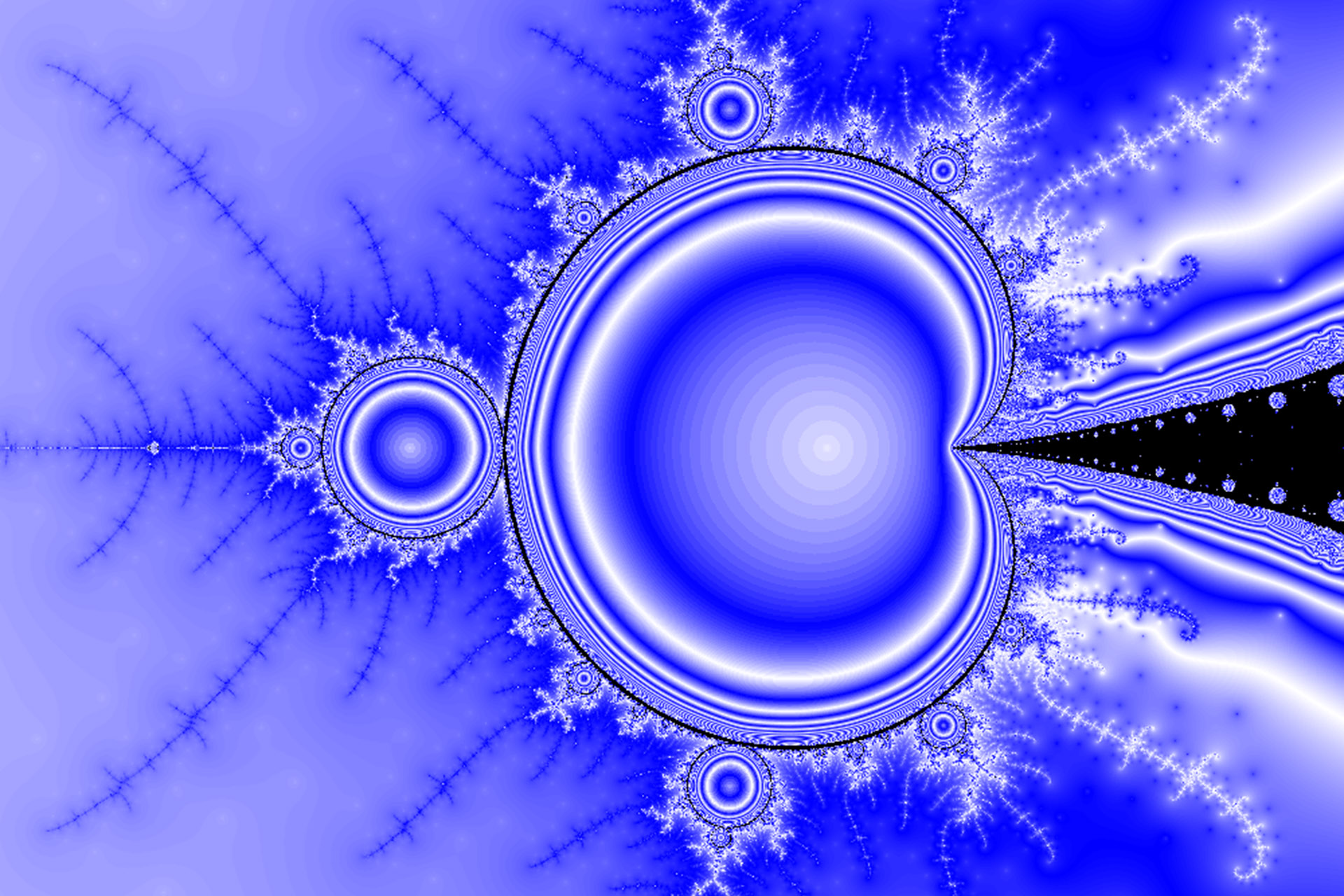You see Saturn’s rings. She sees hidden number theory.
You see Saturn’s rings. She sees hidden number theory.

Math professor finds psychedelic beauty in complex sequences
Why are there gaps in the asteroid belt?
The answer can be found in dynamical systems, the branch of mathematics that deals with the evolution of chaotic systems over time. The field was the subject of a recent Harvard Radcliffe Institute talk by Laura DeMarco.
“It turns out there’s a lot of hidden number theory in the planets’ very motion, for example, in the structure of the rings around Saturn,” explained DeMarco, Radcliffe Alumnae Professor at Harvard Radcliffe Institute and a professor of mathematics in the Harvard Faculty of Arts and Sciences. There are places asteroids simply cannot be, she went on, because of the underlying number theory that “prohibits certain behavior.”
To find equations that predict real-world systems such as planetary motion, DeMarco researches sequences of numbers that are generated recursively. Perhaps the most best-known example is the Fibonacci sequence, a linear recursion in which each number is the sum of the two numbers that came before it, starting with 0 and 1. Visual representations of the Fibonacci sequences appear in the natural world — for example, in the scales of pine cones, in pineapple fruitlets, and in the structure of nautilus shells.
“This suggests that somehow the Fibonacci numbers can be used to encode some aspects of the natural world,” DeMarco said, just like more complex nonlinear sequences show up in the chaotic and seemingly unpredictable structures of planetary motion, weather patterns, and changes in animal populations.
“A lot of what I think about may or may not be useful for real life, everyday life,” she said. “But it’s trying to understand how the complexity of numbers, and the interactions of numbers, force geometry, force certain geometric structures.”

DeMarco is fascinated by the complexity of seemingly simple sequences. For example, every number in the Fibonacci sequence, except 8 and 144, has a prime factor that has not appeared earlier in the sequence.
“At every step, you’re going to see at least one new [prime] number, suggesting that there’s something rich and complex about this sequence,” DeMarco said. “Any old sequence is not going to have this feature.”
The theorem that almost every number in certain recursive sequences like the Fibonacci has at least one prime divisor that does not appear earlier in the sequence was first proved in 1913 by the mathematician R.D. Carmichael. What’s not known is whether a similar theorem holds true for nonlinear recursive sequences. Searching for the answer to that question has led DeMarco from the numeric to the psychedelic — or at least, the visually psychedelic.

DeMarco graphs nonlinear sequences into complex, recursive visualizations, looking for patterns of symmetry and asymmetry. The asymmetry in her visualizations provides evidence that multiple recursions, when run simultaneously and following very simple sets of rules, can generate extraordinary complexity.
“I don’t intend to create art, per se, but somehow and sometimes the pictures are surprisingly beautiful,” she said.
One of her favorite visualizations looks remarkably like an eye. It seems perfectly symmetrical, but it contains slight variations, and, when you zoom in, a tiny copy of a famous fractal shape, the Mandelbrot Set.
Like the Fibonacci sequence, the Mandelbrot Set is defined by a simple rule: It contains all the complex numbers for which a nonlinear sequence, when repeated, does not result in ever-larger values — that is, it does not diverge to infinity. If the complex number used as a constant yields a result greater than 2, it’s not part of the Mandelbrot Set.
In DeMarco’s eye visualization, the Mandelbrot set shows up on one side but not the other, acting, in her words, as a “certificate of independence” between the two sides. Those tiny distinctions, invisible to the naked eye, allow her to draw conclusions about the underlying math.

Of course, a good visualization is just the first step. “I need some logical argument to build on what’s known, that’s not just true for what you see in the picture, but that is always true.”
DeMarco shared more about her work in a 2024 conversation on the Harvard Radcliffe Institute’s podcast, BornCurious.
Latest Harvard
- AI presents challenges to journalism — but also opportunitiesData editor explains how digital tools sift through mountains of government, business data to find ways to make things better or unearth crimes
- When communication could mean life or deathWorkshops on delivering better medical care to deaf patients stress importance of sign language, body language
- Looks like a book. Reads, to some, like a threat.Houghton exhibit explores forbidden history
- Her science writing is not for the squeamishIt takes a lot to gross out ‘Replaceable You’ author Mary Roach
- Over 60 and onlineIn new book, law professor busts myths about ‘hapless grandparents’ in the digital age
- ‘How old are you? 70s? You’re JV, maybe next year.’Olympic gold winner Bill Becklean has been at crew for 75 years, will be coxing boat of octogenarians at Head of the Charles






